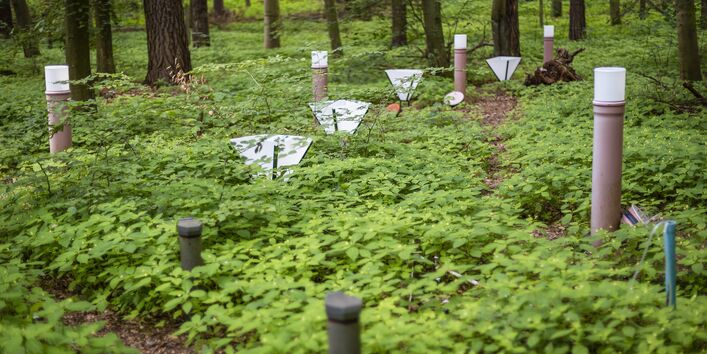Ecosystems more sensitive to nitrogen pollution than previously assumed - Study
Ecosystems such as forests, heaths and surface waters are more sensitive to atmospheric nitrogen pollution than previously thought, according to a report under the Geneva Air Convention of the United Nations Economic Commission for Europe (CCE).
The report (Review and revision of empirical critical loads of nitrogen for Europe) provides revised and updated empirical threshold values (critical loads) for harmful nitrogen inputs to natural ecosystems. It is based on an analysis of new scientific data from the past 10 years by a team of 45 leading European nitrogen and ecosystem experts. In 40% of the ecosystem types reviewed, critical loads of nutrient nitrogen had to be adjusted downwards (more sensitive), in considerably less ecosystem types the value was adjusted upwards.
Excess reactive nitrogen inputs disturb the nitrogen balance of ecosystems and endanger plant communities, soils, and biodiversity. Due to anthropogenic emissions, the current global biogeochemical flows of reactive nitrogen have been shifted far beyond the proposed planetary boundary, which is set to avoid the risk of generating irreversible changes to ecosystems and their biodiversity due to nitrogen pollution.
The revised nitrogen threshold values emphasize even more the need to reduce the amount of reactive nitrogen entering the environment. Nitrogen is primarily emitted from agriculture, i.e. from livestock manure and fertilized fields (primarily as ammonia), but also from combustion processes in vehicles and industry (as nitrogen oxides). Mitigation is most urgently needed where sensitive ecosystems are located within or around agricultural regions with intensive farming of livestock or close to high-traffic motorways or heavy industry. In the Netherlands, the country with the highest livestock density in Europe, the government recently announced plans to compensate farmers for reducing their number of livestock in order to lower nitrogen pollution, in response to a court decision. This may serve as an example for other countries with high livestock densities, such as parts of Belgium and Germany, which also need to increase their efforts to reduce nitrogen pollution to protect sensitive ecosystems.
Further information:
The report was published on 24 October 2022 by the Coordination Centre for Effects, which operates under the Geneva Air Convention and is hosted by the German Environment Agency.
About the CCE:
The CCE is an organizational entity under the CLRTAP, the Convention on Long-range Transboundary Air Pollutionof the United Nations Economic Commission for Europe (UNECE). The CLRTAP was signed in 1979 and came into force in 1983. It was the first international legally binding instrument to deal with problems of air pollution at a broader scale. The goal of the convention is to control air pollution and its effects and to develop an extensive programme for the monitoring and evaluation of the long-range transport of air pollutants.
